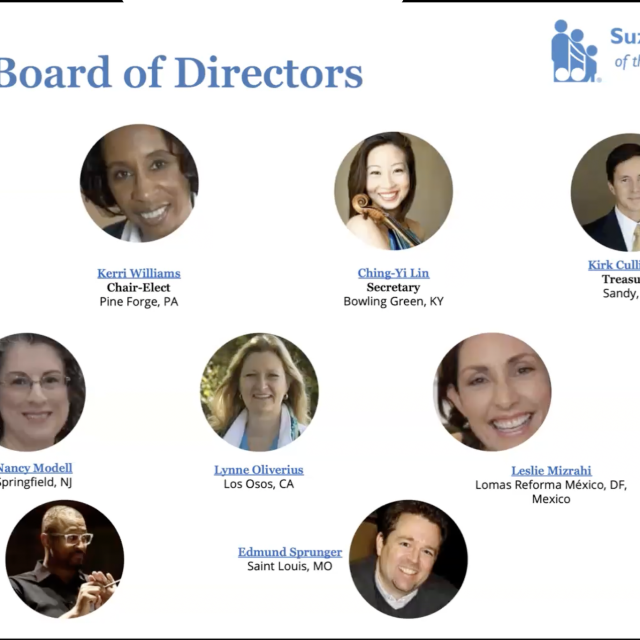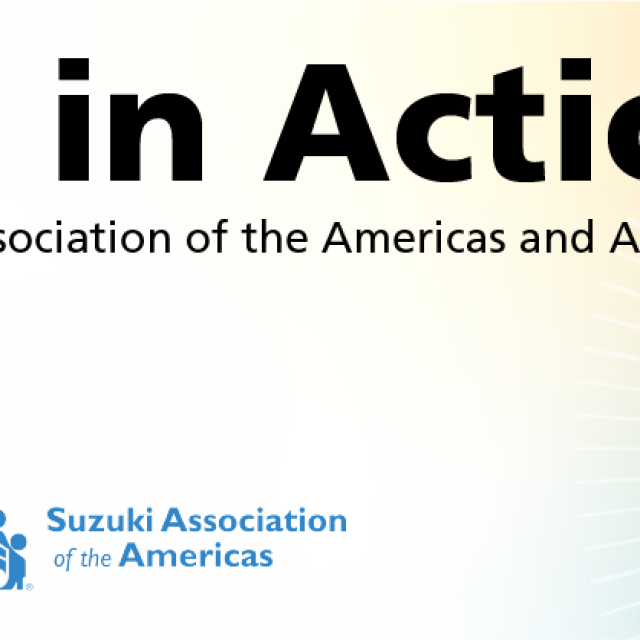By Nate Zeisler
There is something special about the arc of a school year. As educators, we work tirelessly to scaffold and implement a plan based on our annual goals to help our students find success. From the exciting start of the year until the final performance, we run a marathon to make sure our students feel a sense of accomplishment and support. The problem is that we often give everything to our students at the expense of our own attention to the arc of the year.
The day I realized I needed to start paying attention to the arc of my year was on March 22, 2011. Well into my fifth year of teaching bassoon at Bowling Green State University in Ohio, I was exhausted. I had a studio of twelve lovely bassoonists, I was performing in two orchestras, giving recitals, and building a non-profit organization. All wonderful pursuits, however, when taken together I was simply overwhelmed. In pursuit of trying to do everything, I felt like I was successful at nothing.
That night in March, I shared a recital with four of my colleagues at Bowling Green State University. Less than twenty-four hours prior, I was running a national conference in Kansas City, MO. For the entire weekend, I worried that I wasn’t going to be at my best at the performance. Breaking news, I wasn’t.
Standing on stage during the performance, I remember feeling ashamed that I was letting my colleagues down. My guess is that most people in the audience didn’t realize I wasn’t at my best, but I did. I knew I needed to make a change.
I was stretched too thin for too long and the path I was on was unsustainable. I was successful at work, but it came at the cost of my sleep, my relationship with my wife, and ultimately, my happiness.
I knew I was suffering from burnout, but I kept going, hoping that everything would simply work itself out. However, as I was putting my instrument away after the performance, I knew that my path was unsustainable. Our field seems to be in an endless cycle of doing more to justify the existence of this art we all care so much about. It’s almost as though there is an imaginary badge of honor for being the busiest educator or artist on the block.
It took a horrible experience on stage for me to finally seek a change. Over the next decade, I worked to develop some guard rails to help me avoid burnout and remain inspired to continue on my path.
Here are seven tips to help you avoid burnout and feel a continual sense of rejuvenation in your career.
-
Find time to reflect, celebrate, and plan. One of the biggest opportunities to reset and feel a sense of rejuvenation is right after a big event. Whenever I hit the end of an arc in a program or school year, I try to treat it as an opportunity to pause instead of immediately moving on to the next thing.TIP: Try to block off 2–3 days on your calendar AFTER a program concludes to give yourself some downtime, celebrate what worked, and start to identify what could go better the next time. This time needs to be scheduled and blocked off on your calendar at the start of your planning process for any project. I now automatically block this time off on my calendar as soon as I know when my final performance of the year will take place.
-
Find time to connect with your fellow colleagues to celebrate THEIR wins. One of the things I’ve noticed in my career is that our field tends to celebrate the work and accomplishments of the individual instead of celebrating the collective efforts of the team. There is so much to be learned from each other in this space. We are all in this together and I have found it to be such a gratifying gesture to reach out to a colleague after they complete a big project or performance and celebrate their accomplishments. TIP: Schedule a time to take your colleague for coffee to celebrate and give them a moment to reflect on their experience.
-
Give your team a break. If you are in a position of power, gather your team to celebrate after you complete a big project. Whenever possible, give them a break so that they can take a pause before moving on to the next big thing. TIP: In addition to a break, ask your team what they might like to do differently the next time around to help make the program, class, or performance better in the future.
-
Reflect on the time it took you to bring a performance or project to life. Not all performances or projects are created equal. At this point in my career, time is the commodity that I value most. Be aware of the amount of time a particular project took to better understand how you will build programs in the future. TIP: Look back at the time spent on a project and tally how long it took you to bring the project to fruition. I often take more time than I thought I would on a project and documenting my work on a weekly basis in this way allows me to set more time aside for similar projects in the future.
-
Ask “What might I remove?” I try to set a longer period of time after my final event of a season to ask myself and my team if anything should go away so that we collectively have more time to pursue the things that bring us meaning in our creative pursuits. TIP: Just because you identify something that might go away does not (necessarily) mean that it needs to be replaced. Taking away some project activity might help you and your team avoid burnout and create a deeper artistic experience with the programming that remains in place.
-
Connect with your fellow educators. This profession can be incredibly isolating, so I try to make it a point of staying connected and curious about what my friends and colleagues are doing. TIP: Pick up the phone and (gulp) give your colleagues a call, set a lunch date, and let them know that they are valued. I have found that this simple gesture alone is a powerful way to help someone suffering from burnout.
-
Recenter why you’re doing this. So often, I work with individuals who suffer from burnout because their expectations for what should happen in their work and life aren’t matching what is happening in reality. My advice is always to start by asking them to recenter why they chose to pursue this artform we all love so much. Tip: Ask yourself this question: Do you find your current work meaningful? If yes, why do you feel this way? Jot your answers down on a piece of paper. If you don’t find your current work meaningful, why not? What do you need to do to find meaning within your work? Jot that down as well. Finally, where are you finding meaning in other parts of your life? Jot those down as well. Your goal here is to identify those meaningful reasons why you are on the path you’re on.
Not too long ago, I worked with an artist who was so worn down from the arc of his year that he was considering getting out of the profession altogether. I remember him quietly closing the door to my office, sitting down, and saying in a hushed tone, “I know that I am the only one who feels this way, but I think teaching might not be the right path for me. I’m completely worn out to the point of exhaustion while everyone else is thriving.”
I assured him that he was not the only one dealing with exhaustion and that most of us were not only great musicians and teachers, but we were also quite good at acting. Exhaustion and burnout is one of the least spoken about but most pervasive challenges musicians and teachers face.
Once he realized that he was not alone with these feelings, we started a series of deep conversations about why he was in the profession. This was difficult for him, not because he struggled to define why he was a teacher, but because he had never taken so much time to consider his path as an artist and educator. He spent so much of his career with his head down, giving his time and energy to others, that he left no time for himself.
Over the course of our time together, I watched his entire career outlook change. We worked through the seven steps above together and not only did he come up with a plan that would help him find balance, he felt empowered to take control of the situation should he feel stuck in the future.
Today, this person creates an annual plan to help him stay on track. He creates this plan during the month of June, at the end of his year of teaching and before he takes some time off in July and August. He connects with this plan once a month during the school year to make certain he is on track. He credits this work with keeping him in the profession.
While planning for the arc of the year to avoid burnout is an important part of a successful career, there is a second arc to a year I’d like to discuss in this article: the arc of mundanity.
How to Avoid the Arc of Mundanity
At one point early in my career, I got to Friday afternoon and realized that I had addressed the exact same pedagogical problem with every single student I worked with over the course of the week. I had twenty students at the time, and I remember wondering if I was cut out to teach the same concepts to emerging artists, over and over, for the next thirty years of my career.
Repetitive teaching can be one of the biggest challenges to tackling the arc of a year. Even the most dedicated teachers can find themselves trapped in a cycle of mundanity, experiencing burnout when faced with teaching the same repertoire to students who seem to face the same challenges day after day.
Here are some thoughts on how to break free from the doldrums in your year and reignite your passion in teaching.
-
Recognize when you’re not inspired. When I am not inspired, I struggle to find joy in my work. Without joy, I often suffer from emotional exhaustion, a decline in professional efficacy, and a decreased sense of accomplishment. This is a problem when my job is to inspire my students. To combat this, I often try to look for inspiration in the process of helping my students. Sometimes it is the process itself and not the final product that provides the inspiration to keep me going.Tip: Meet with a good friend and colleague in person or over zoom every Monday morning to kick off your week and discuss your pedagogical process to find inspiration. This is less of a coaching session and more of a safe place to share experiences, discuss challenges and seek advice from someone you trust who has faced similar situations, which can invigorate your teaching.
-
Actively combat the monotony trap. Teaching the same repertoire repeatedly can inadvertently lead to a sense of monotony. It may seem like an endless loop of addressing similar issues, addressing common mistakes, and delivering the same lessons year after year and this repetitive nature can gradually erode your motivation, creativity, and enthusiasm, culminating in burnout.Tip: To combat monotony, actively seek renewed inspiration. This can be achieved by engaging ins professional development, attending workshops or conferences, collaborating with colleagues, or exploring new teaching methods. Broadening your repertoire, discovering new musical styles, and incorporating innovative technologies can inject fresh energy and enthusiasm into your teaching.
-
Embrace individuality and tailor instruction. Instead of viewing each student as facing the same problems, celebrate their unique qualities and tailor instruction accordingly. Embracing individuality allows for personalized approaches that can reignite your passion and foster greater student engagement. Tip: Incorporate diverse teaching techniques, introduce new repertoire, or adapt your teaching strategies to suit each student’s specific needs. I have found that this can revitalize my own teaching experience and provide fresh perspectives for both myself and my students.
I have always found that the best way to avoid burnout or monotony in teaching is to make sure I have a plan developed for renewal, reflection, and rejuvenation. While taking the steps in this article will hopefully be a starting place for you to create space for yourself in this work, I hope that you will take some time to develop your own plan around the arc of the year so that the arc of your career remains positive in the years ahead.

Nate Zeisler
Nate Zeisler, Dean for Community Initiatives at the Colburn School in Los Angeles, envisions a world where students majoring in the arts have a clear path to a sustainable career, where creative minds are empowered and inspired to rule the workforce, and where access to the arts is not just for the privileged few, but for all. Nate’s book The Path of the Unrelenting Creative will be released on August 15, 2023.









